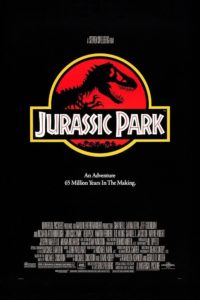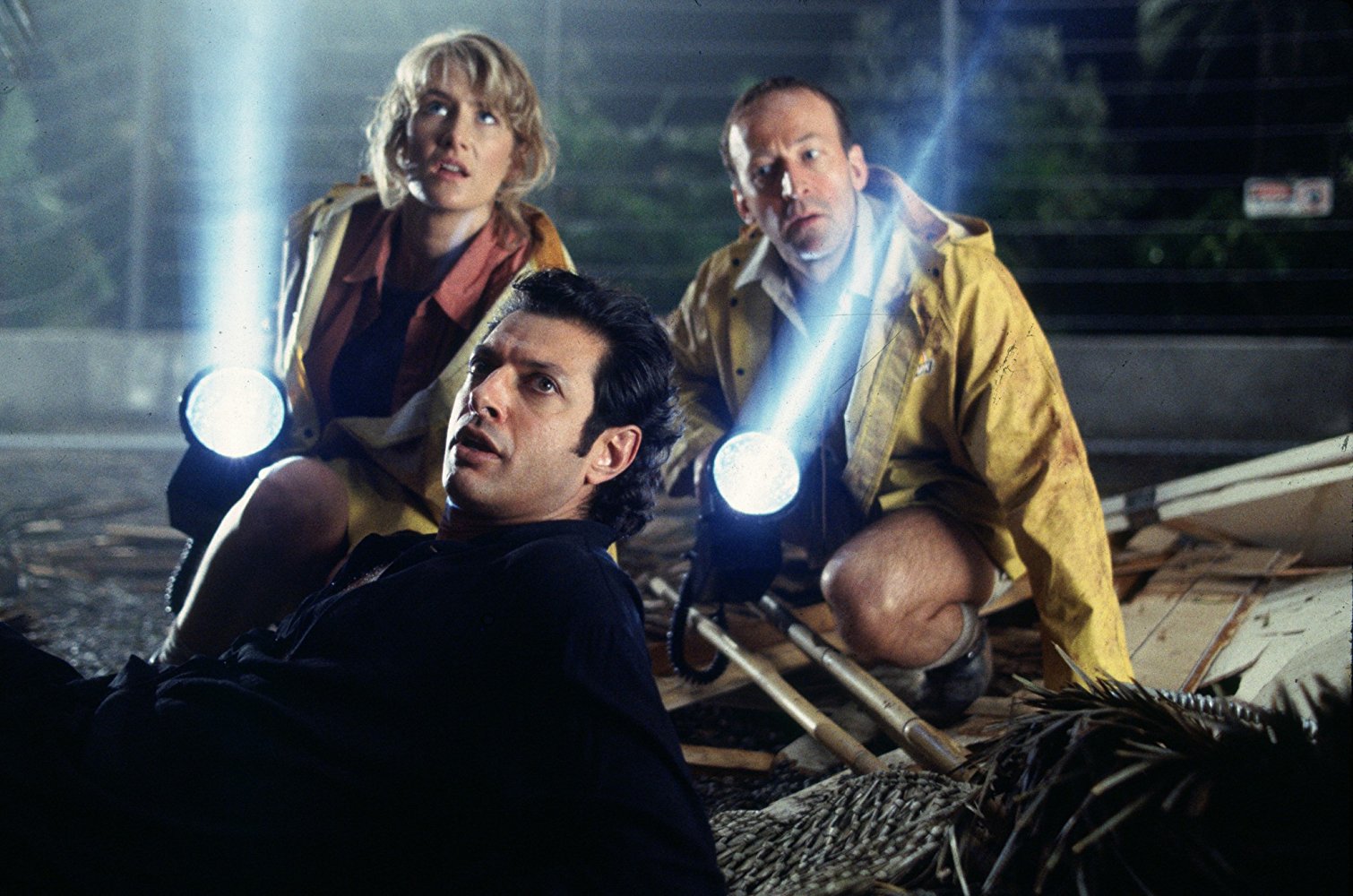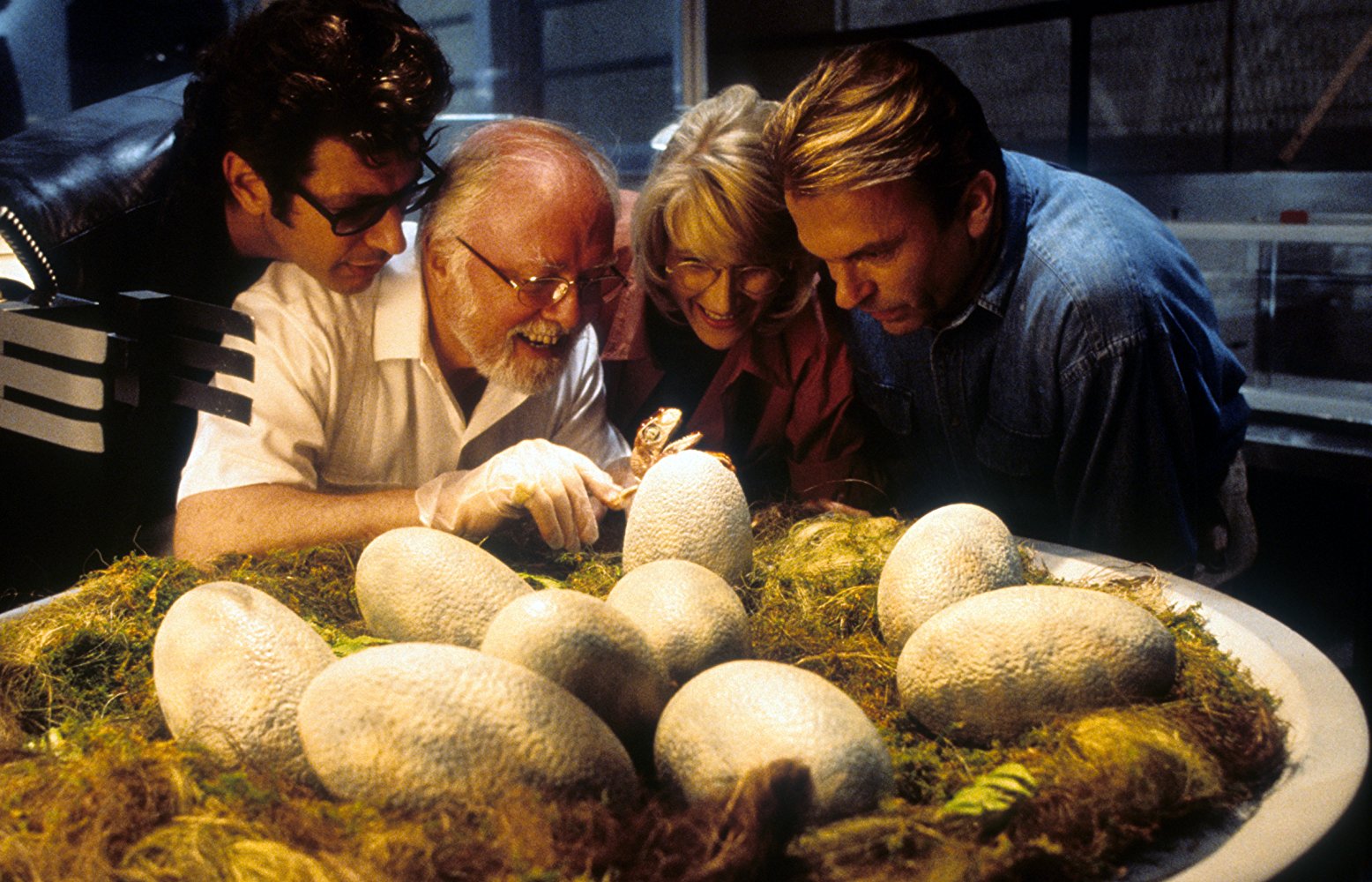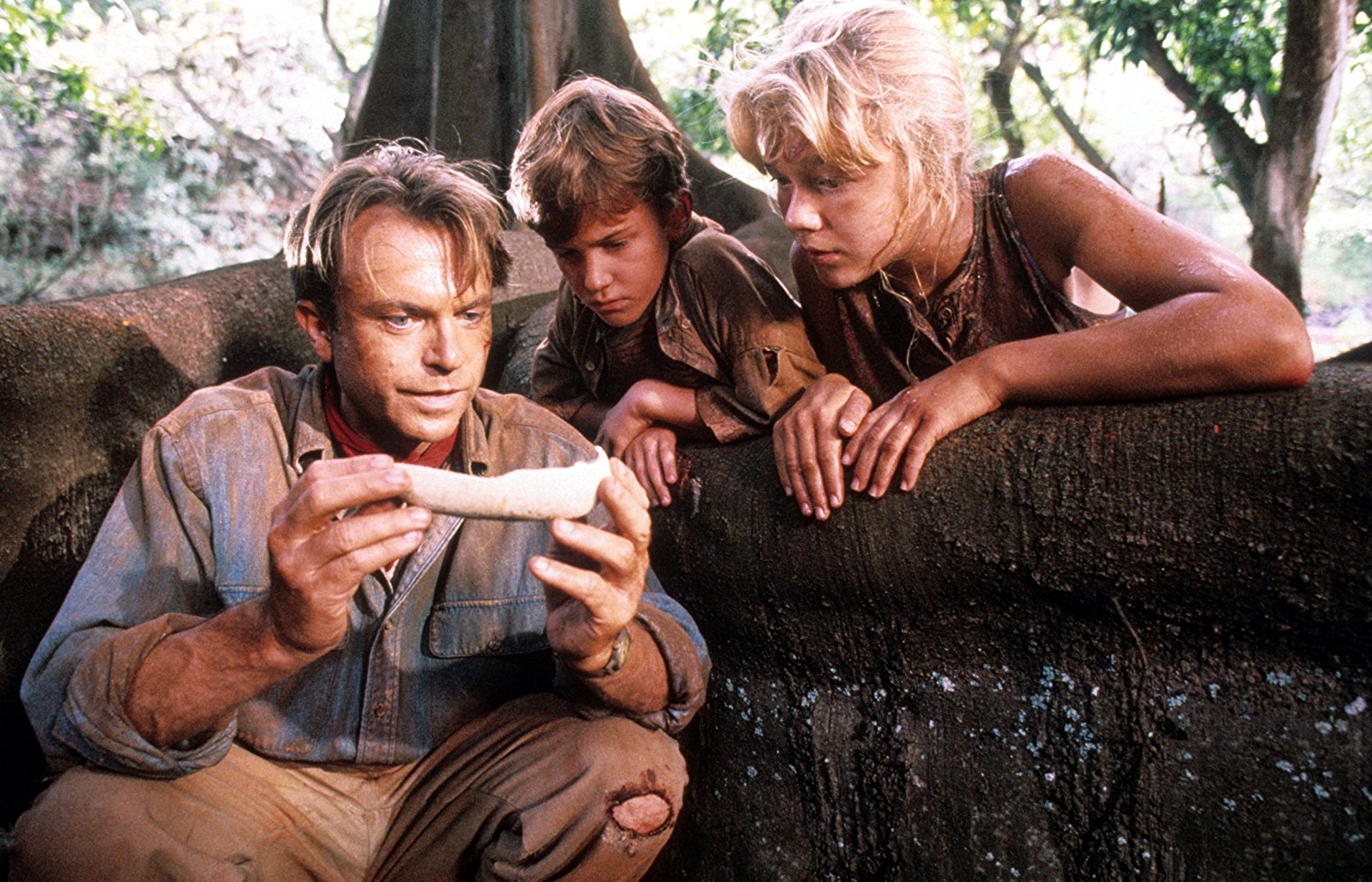Still an Unforgettable Thrill Ride 25 Years Later
In the weeks leading up to the release of Jurassic World: Fallen Kingdom, we’re revisiting the original Jurassic Park trilogy.
DIRECTOR: STEVEN SPIELBERG/1993
 Dr. Alan Grant has dedicated his modern-day life to the ancient dinosaurs: studying their habits, researching their lineage, digging up their bones. So when he tells a flippant kid who scoffs at a velociraptor skeleton to “try to show a little respect” for their six-inch retractable claws, you know to believe him.
Dr. Alan Grant has dedicated his modern-day life to the ancient dinosaurs: studying their habits, researching their lineage, digging up their bones. So when he tells a flippant kid who scoffs at a velociraptor skeleton to “try to show a little respect” for their six-inch retractable claws, you know to believe him.
When businessman John Hammond (Richard Attenborourgh) asks Grant (Sam Neill) and his colleague, paleobotanist Dr. Ellie Sattler (Laura Dern), to take an excursion to his new business venture on an island near Costa Rica, the two are skeptical, but his money talks. The pair helicopters to the mysterious island along with a mathematician (Jeff Goldblum), a lawyer (Martin Ferrero), and Hammond’s grandchildren (Joseph Mazzello, Ariana Richards).
The centerpiece of Hammond’s tourist attraction stuns the party: living, breathing, cloned dinosaurs, ranging from the tiny, deadly dilophasaurus to the gentle giant brachiosaurus. Hammond hopes a weekend tour will convince the professionals to publicly endorse his park, but Goldblum’s Chaos Theory proves its point when anything that can go wrong does: “Life will not be contained. Life breaks free, it expands to new territories and crashes through barriers, painfully, maybe even dangerously.”

Jurassic Park is, of sorts, a modern 12 Angry Men. Both cases study what happens when you lock a group of people in a contained space and let their viewpoints collide over an ethical issue, but instead of Henry Fonda and 11 jurors, you watch a few scientists and dozens of dinos. And Jurassic Park is a jungle of viewpoints: Idealism, Realism, Naturalism, Pessimism, Skepticism, Capitalism, Materialism, Moralism. No two people are on exactly the same page, but circumstances demand they band together. (Jack’s mantra from LOST, “Live together or die alone,” rings true on this island, too.)
John “Spare No Expense” Hammond is the worst kind of Idealist. Blind to any setbacks or objections, his influence pushes his grandchildren to become naïve Idealists themselves. They have not lost their innocence and they trust their grandfather, so they do not know to think anything otherwise. Drs. Grant and Sattler are the Realist Naturalists, in awe of nature but aware of its dangers, even more as the story progresses. Chaos Theory enthusiast Ian Malcolm beats them to that realization when he makes the declaration a few paragraphs above near the beginning of the film, making him our Pessimist who expects only the sour ending. Lawyer Donald Gennaro starts a Skeptic and turns into a Capitalist, setting high hopes on the cash flow this park could start. He contrasts with the worst kind of Capitalist in Dennis Nedry (Wayne Knight), the Materialist mercenary who works for the highest bidder.

Despite their different worldviews, all characters play the Moralist. Gennaro asks Hammond to answer for lives lost. Nedry believes he’s been undervalued with a low paycheck. The children recognize the failures of the adults who abandon them. Hammond believes, “Creation is an act of sheer will,” which Malcolm counters with, “Your scientists were so preoccupied with whether or not they could that they didn’t stop to think if they should.”
We know we’ll make it home with our thirst for thrills quenched—and better yet, we’ll make it there alive.
Another statement from Hammond may be the most relevant: “I don’t blame people for their mistakes, but I do ask that they pay for them.” His words foreshadow his own future, but he also speaks to everyone on the island. Their histories, backgrounds, and intentions don’t matter—everything comes down to what they do in the park and how they will (or won’t) own up to it.
None of the characters leave the park (if they make it that far) in the same state they entered, and neither do we as the audience. Whether we entered awestruck like Sattler or more cynically is besides the point—we leave with the conviction that our actions are not isolated. Our choices impact others and the world around us, and whatever we choose, we must take responsibility for them.

Perhaps the most awe-inspiring part of Jurassic Park is it does all that in the guise of an action blockbuster that holds up unbelievably well 25 years later. The first reveal of the dinosaurs may have had more weight when the CGI technology was new in 1993, but it’s hard not to chill up watching Grant and Sattler pop up from their Jeep with jaws dropped. Even the suspense still holds in repeat viewings. When that glass of water ripples to tip off the awaited arrival of the T-Rex, your breath pauses, and you pull your blanket up to your face in anticipation. When person after person disappears, when a new power system fails, when the velociraptor’s shadow appears, you feel clinch after clinch in your gut, making it one of the best suspense movies of all time.
Like Hammond hoped, Jurassic Park is an unforgettable ride. Unlike the ill-fated first visitors, we know we’ll make it home with our thirst for thrills quenched—and better yet, we’ll make it there alive.

